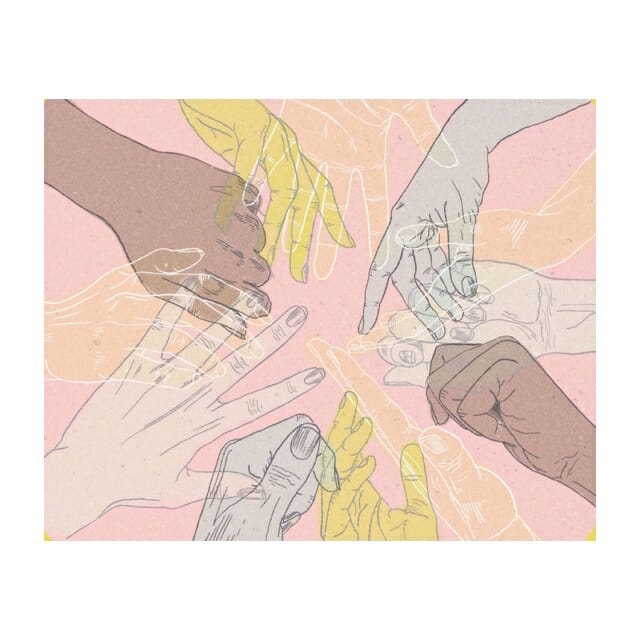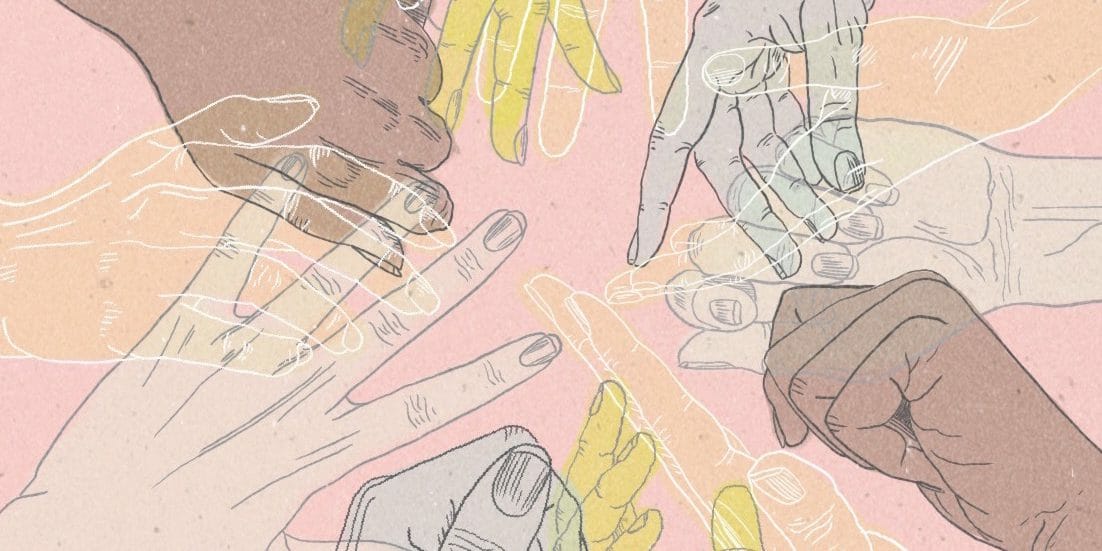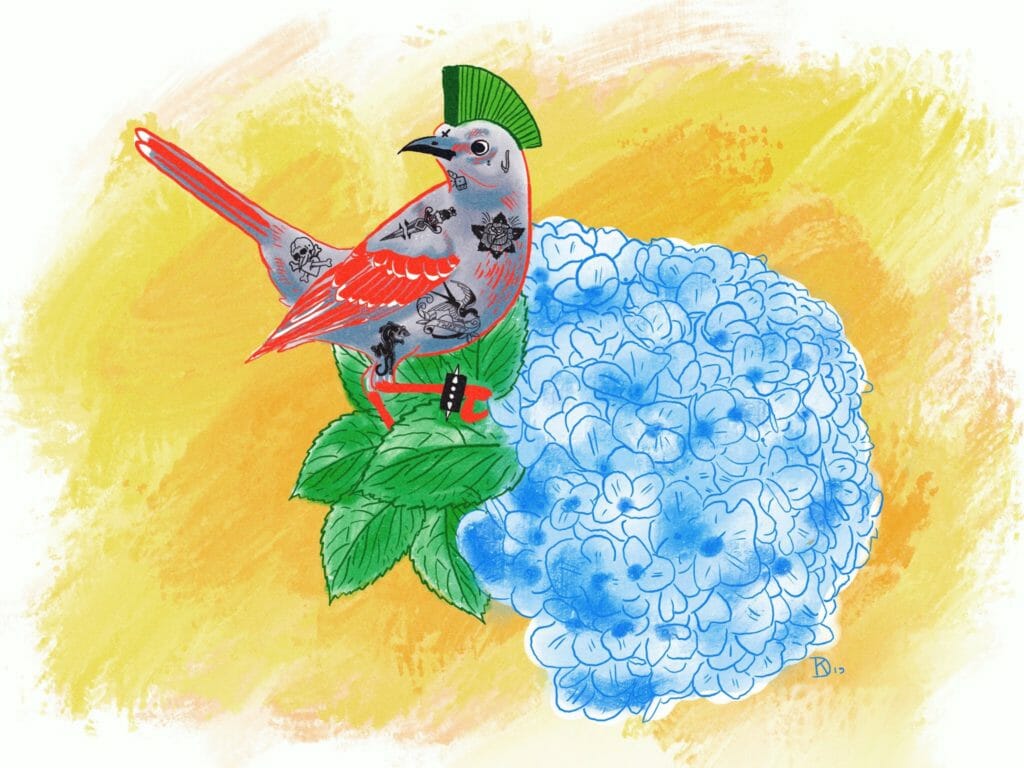In 2019, people are pushing the boundaries of traditional romance and relationships more than ever. One way we see these challenges manifest is through the increasing popularity of a new kind of relationship structure: ethical non-monogamy, also known as polyamory.

The terms used around poly concepts may vary slightly in definition depending on who you ask, but in general, here’s how they are defined:
- Ethical non-monogamy (ENM) is seeing other people in a romantic or sexual capacity outside of an established relationship.
- Polyamory, similarly, is having multiple established romantic or sexual relationships with multiple people. This is not to be confused with polygamy, which is the practice of having multiple legal spouses. Think the show “Sister Wives” or “Big Love.” Some religions have allowances for polygamy, but it’s illegal in the U.S.
- An open relationship, for most people, is having sexual relationships outside of an established relationship.
These terms may be used interchangeably (as they will be for the purposes of this piece), especially ENM and polyamory, or they can stand alone as distinct and separate relationship dynamics.
In the media, it’s often subtle, the butt of a joke. In season three of “Bob’s Burgers,” Tina suggests forming a “dating wheel” with two boys fighting for her affection. In “Rick and Morty,” the paternal grandparents drop a bomb in the series’ third episode by bringing Grandma Joyce’s lover to family dinner where her husband is also present. There are several instances of polyamory in Netflix’s “Orange is the New Black,” such as in season five when Muslim couple Alison and Hassan explore the possibility of adding a second wife to their marriage for an array of reasons. An episode of “Easy,” another Netflix original, also depicts a couple exploring an open marriage, although they each seek individual partners rather than one to share.
My first exposure to polyamory came through personal experience. When I was in college, I saw many serious, long-term couples break up. I noticed a pattern: many of these relationships dissolved because one or both partners wanted to be with other people—but not necessarily instead of their partner. They wanted a chance to see more of the world, to be with more people. But this desire led to the dissolution of their relationship.
So when this issue came up in my own relationship, I knew there had to be another way. I loved my partner, and I didn’t want to leave them. But I was curious. I wanted to know what else was out there. I thought it might help me more fully appreciate what I had.
I don’t remember how or when exactly the idea of ethical non-monogamy occurred to me (and “ethical” is important here, because I did not want to cheat), but when it did, it seemed like an ideal scenario: I could stay with my partner, but I could also fulfill this curiosity which was quickly growing insatiable. I didn’t have to choose between a stable, loving relationship with a partner I adored and getting a chance to experiment. Maybe I could have it all.
I brought it up with my partner. To my astonishment (and to my good fortune), they were very receptive to the idea. We talked about it for weeks before actually doing anything about it. We set boundaries and ground rules, discussed what we were and were not okay with, reminded each other that we loved one another, and then helped each other set up our dating profiles.
Our first foray into non-monogamy was not always fun and easy. We certainly encountered our share of roadblocks: jealousy, insecurity, and all the discomfort you would expect from so drastically altering a long-standing dynamic. I found it much easier to find other people to date than my male partner did (and this, I think, is a pretty common experience) and this eventually led to our decision to return to monogamy.
So for the real question: Why do people choose poly? (And it is a choice. Polyamory is not an orientation like being gay or bisexual; it’s a relationship dynamic.) And why is it coming up so much now in popular culture and younger generations? Any given person may be more comfortable or happier in a poly relationship, but in general, that same person can also happily survive in a monogamous relationship.
Maybe it’s in our nature. Some people believe that humans are not—and have never been—designed for monogamy, which is why cheating is such a prevalent part of dating and relationship culture. Only a handful of non-human species exhibit monogamy in the wild. We grow up learning about swans and penguins who choose a mate and stick with them for life, but ignore the fact that many more animals do not behave that way, humans included.
But instead of this inclination being viewed as natural, plenty of people see poly folks as cheaters, or sluts, or some other shameful stereotype. But the truth is, poly relationships require lots of commitment. And scheduling. You have to take into account the wants and needs of multiple people, and striking that kind of delicate balance can be very difficult.
At its core, polyamory is about empathy and about real, meaningful connection. The love you have for one person does not diminish or discount the love you have for another; if anything, it may enhance it. Despite how far we’ve come in recent years, we’re still a long way off from mainstream acceptance of polyamory. Poly relationships are still given a sort of side-eye, regarded with interest, but not fully considered a “real” relationship. In time, we may see wider acceptance of nontraditional relationship structures, in a future in which we all have the freedom to love and live in the way that suits us best.
Opening an established relationship is not as easy as deciding to see other people and setting up a Tinder profile—it usually requires lots of hard work and open communication. Communication is one of the cornerstones of polyamory, and almost any poly person will tell you that it will not work if you can’t honestly talk to your partner.
Keeping the pre-existing relationship alive and nurtured is also a big concern for many newly-open couples. It can be tempting to devote all of one’s time and energy to a newly established relationship, known as “new relationship energy” (NRE) in the poly community, so it is important to keep in mind that just because you have a new partner, your established partners don’t need you any less. To help explain NRE, think about the first crush you ever had. For a while, they probably consumed most of your daily thoughts and motivated many of your actions. If you got into a relationship with that person, you probably spent all your available free time with them. That same thing can happen in poly dynamics and it’s important to avoid neglecting your pre-existing relationships in favor of cultivating a new one.
There is a pretty hefty stigma against polyamory, as most people seem to think that it’s just for people with commitment issues, or that poly relationships are somehow less valid or less stable than monogamous ones. But when you think about it, it’s unrealistic for all of a person’s needs—emotional, sexual, whatever—to be met by a single person. Maybe having multiple partners enriches the experiences and connections shared with each of your partners; perhaps having an additional partner makes your relationship with your spouse more fulfilling.
As far as scheduling goes, it can be difficult enough for adults to make time for their normal friends; trying to make time for dates and quality time with multiple romantic or sexual partners is a whole new ballgame. But for many people, this sort of controlled chaos is just right.
It’s also a common misconception that polyamory is all about sex. For some people, this is certainly a primary motivation, but in general, being poly is about having multiple meaningful and emotional connections with multiple people. It’s not all sex parties and raging orgies. The most important part of these dynamics is informed consent; that is, all individuals are aware of the arrangement. If your spouse doesn’t know about your other partner (or vice versa), that doesn’t make you polyamorous; it makes you a cheater. It’s important to note that you can certainly cheat in a poly relationship. It just may not be cheating by traditional standards.
To deal with this, many couples decide to establish rules or boundaries, setting expectations for what is and is not acceptable. But what degree of intimacy is too far? Are new partners allowed in shared spaces? Will partners meet one another?
You can’t force polyamory onto a partner, and if you try, it likely won’t work. Open and honest communication and transparency is paramount, and boundaries make all the difference, especially when starting out. Polyamory will not fix pre-existing relationship issues; if you’re unhappy with your partner, adding more people to the mix is unlikely to be the solution.
Some people are “solo-poly,” in that they do not have a “primary” or anchor partner, and instead have multiple partners on the same plane. Others choose to practice hierarchical polyamory, in which partners are “ranked”: primary, secondary, etc. Some people reject the hierarchy structure, feeling that “ranking” one partner over another is unfair. In these cases, terms like nesting partner and anchor partner may be used to refer to an established partner or a partner that you live with.
This is where things can get sort of complicated. With more complex relationship structures—that is, those consisting of more than two people—it can be easy to forget that every party involved is a whole person with their own unique and important perspectives, needs, and feelings. Every partner matters.
Polyamory is not for everyone. It takes real work. Some people describe it as “relationships on hard mode,” because an individual has to consider the needs and desires of multiple partners at once, including their own needs and desires. It can be difficult not to fall into the traps of jealousy, NRE, and hyperfixation on one partner or relationship. These are some of the many reasons poly relationships fail. The people involved need to be fit to do it, between scheduling and tending to multiple people, poly relationships can only work if everyone involved is dedicated to helping it succeed, just like monogamous relationships.




